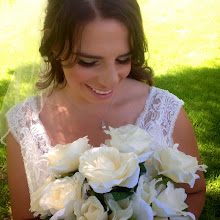 Social Studies I think it one of those subjects that is best taught with all hands on deck, learning and acting out how people lived and the big things that has happened in our countries. Here are so a few strategies to teach our little ones about what makes this country so great!
Social Studies I think it one of those subjects that is best taught with all hands on deck, learning and acting out how people lived and the big things that has happened in our countries. Here are so a few strategies to teach our little ones about what makes this country so great!Timelines: I got this strategies from this website. http://www.educationworld.com/a_lesson/lesson/lesson044.shtml. We all know that Social Studies can be boring cause it is just a list of dates. How boring!! Take the boring dates and the events and make it fun by having the children make their own timeline. Bring back craft time and have your children use whatever they want to as long as the dates are in order. This way, the dates might stick in the children's head. This strategy doesn't have to be altered for our children who are deaf or hard of hearing because it is a simple craft activity. Even children who are deaf or hard of hearing love to get messy and have fun!
Jigsaw: I got this strategy from this website: http://www.udel.edu/dssep/teaching_strategies/jigsaw_coop.htm. This strategies can be used for any age I believe. First select a topic then divide the student into groups of 3 or 4 depending on the size of your classroom. Then assign each group a piece of the "puzzle" or a small detail of the bigger topic. Then have the student be responsible for that information. They can look up more infuriation in their text book, they can make something that relates to their piece. Whatever that would help them to remember what they are learning, then after a certain amount of time have the students share their piece of the puzzle to the class. I think for an activity like this you can still make it work with children who are deaf or hard of hearing you just might have to take the pieces of the puzzle smaller so the student has more of an idea of what to do. You might actually have another step by step in what you want the child to do to find more information of the of that specific topic. You might have to actually teach the student what to do weeks before giving them this assignment. Even though you might have to break this step down further down for our students. I still think it might work out.
KWL: Know-Want-Learn
I got this strategy from: http://www.udel.edu/dssep/teaching_strategies/kwl.htm. This can be used for any subject I believe. K= Stands for KNOW, the student writes down anything that they know on that subject. W=stands for WANT, this is where the student writes down on anything that they want to know on that subject. L= stands for Learn, this is where the student write down on anything that they have learned. I think this is a good strategy for our students who are deaf, they might have trouble writing down what they already know or actually verbalize what they want to know. However, I think that you can talk to the student about the subject and pull what they know about it already. Then I think that after you teach the lesson you can make a writing subject and have them write what they learned. This might be altered again based on your child's level of writing! I think it is a great strategy cause it forces our students to think what they know and what they want to learn about that subject and what they were taught.
Concept Formation: I found this strategy on this website: http://www.udel.edu/dssep/teaching_strategies/concept_formation.htm. It talks about how the teacher should identify a concept then divide the board into 2 sections. One section is examples of that concept and the other section is examples of things that aren't related to that concept. Then you present both lists, and the students can guess what the concept is. I think having our students guess the concept might be hard but a better idea is to use the same idea to teach the concept. You teach the lesson by talking about things that are related to that concept and things that aren't related to that concept. It might help clearly separate two ideas.
Example of Concept Formation Activity
What is the Concept? |
(+) obeying the law |
(-) free speech |
(+) paying taxes |
(-) remain silent |
(+) military service |
(-) obtain a driver's license |
(+) serving on a jury |
The concept is CIVIC RESPONSIBILITY |

Playdoh Geography is a wonderful idea!
ReplyDeleteI am doing a KWL chart with my kids this week! I think they are so easy to use and can be applied to all different types of lessons. Our schedule is so packed that it is very difficult to get everything in. The KWL chart is a great way for me to evaluate where the students are in relation to what we are talking about without taking a large block of time to complete.
ReplyDeleteI love the playdoh geography! That would make social studies so much fun. I know I would love to learn if I could play at the same time!
ReplyDelete